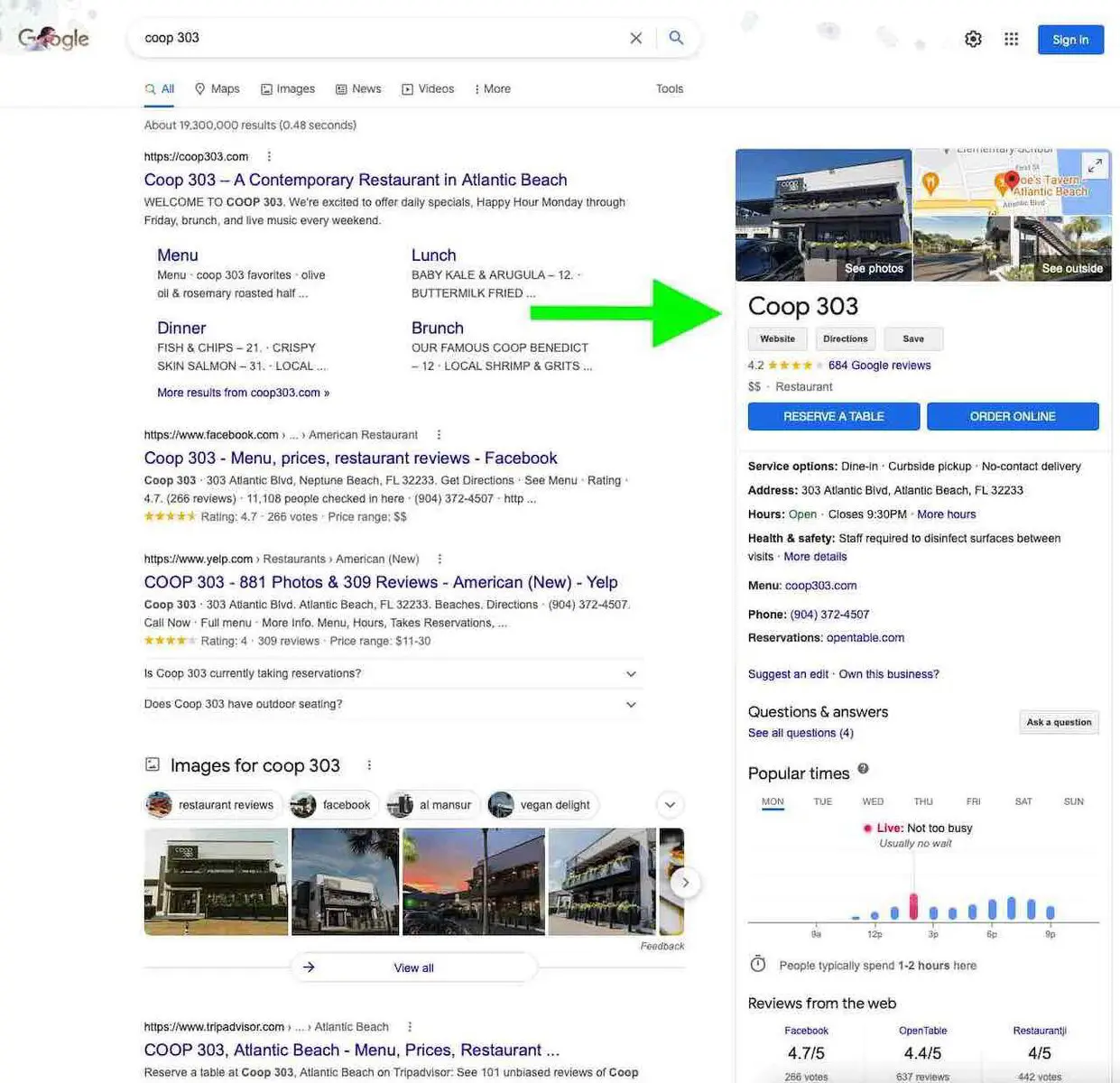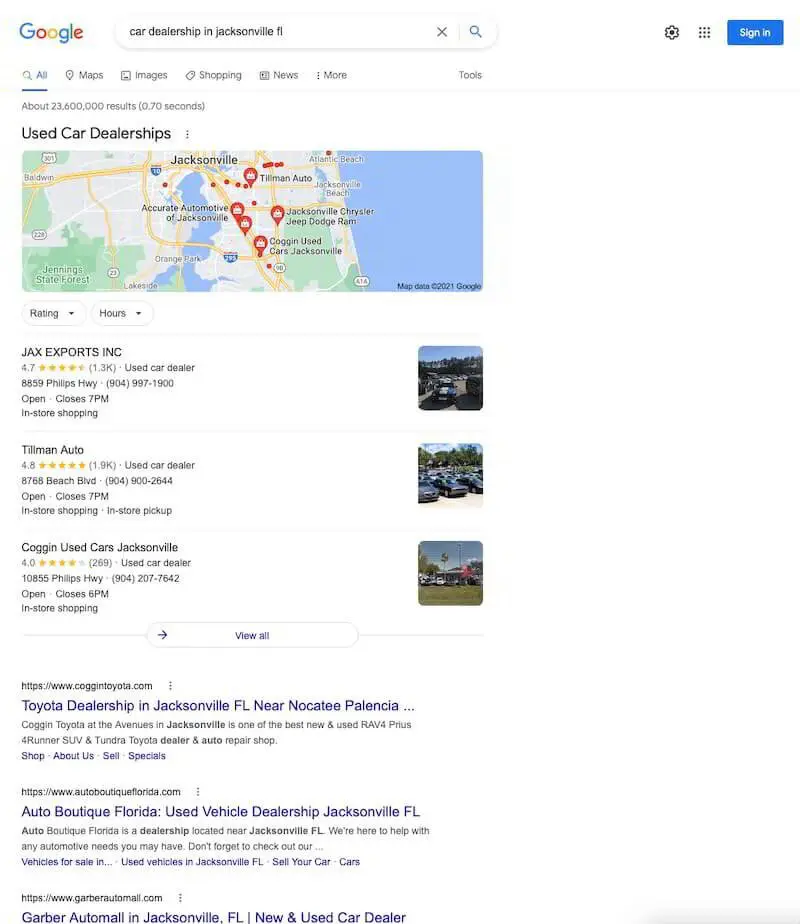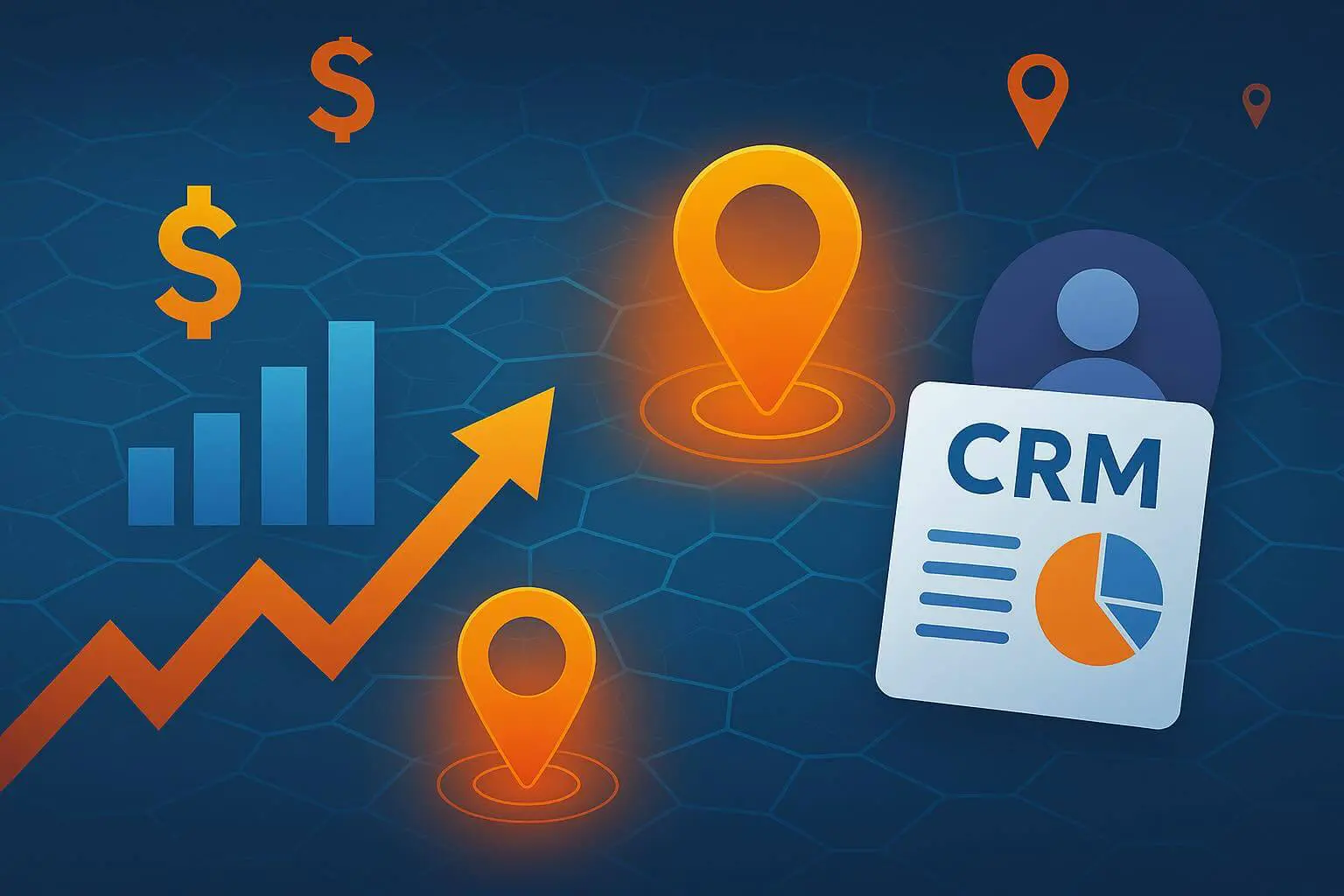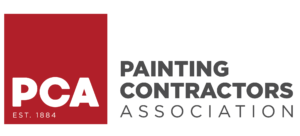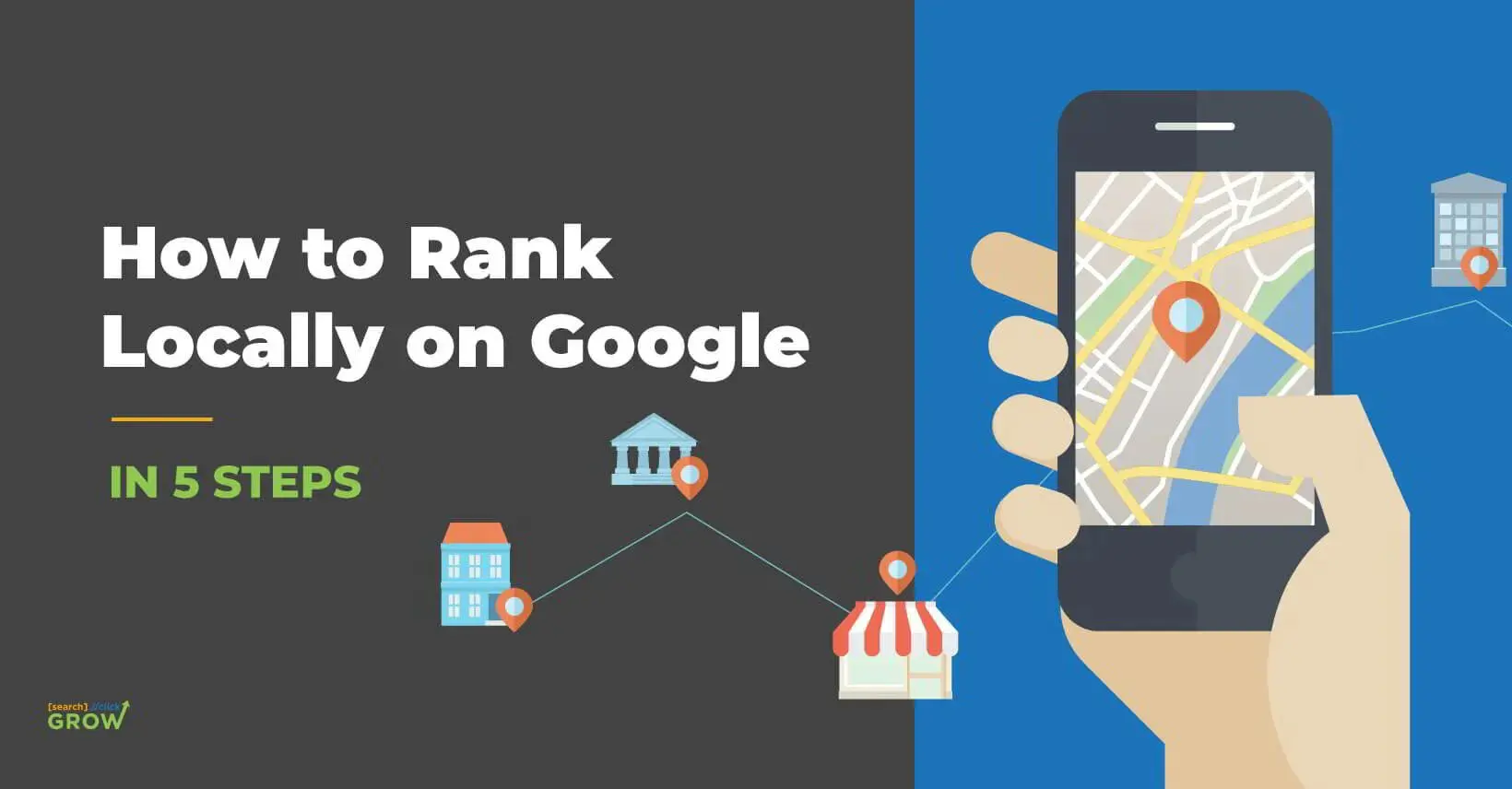
How to Rank Locally on Google In 5 Steps
If you’re a local business, you’re probably well aware that people use Google to discover what you have to offer. With so many companies around, it’s crucial that you’re found!
As such, you’ll need to invest in local SEO if you want to stay relevant. Local SEO allows you to reach out to new customers in your area who may not be familiar with your company.
You may be missing out on potential customers if your company’s website isn’t local search optimized.
In this article, we’ll discuss what local SEO is and five steps on how to rank locally on Google to help your business get more customers.
What Is Local SEO & Why Is It Important?
Companies that rank higher in search engines are more likely to be discovered by prospective customers.
Local SEO is essential for smaller businesses operating on a local rather than national scale. This strategy focuses on acquiring local customers for your company and the products and services you provide.
Failing to focus on local SEO might result in a significant loss of exposure for your company.
The stats below illustrate the importance of local SEO for your business:
- According to an infographic by GoGulf, 46% of all Google searches are for information specific to a particular location.
- As reported by SEO tribunal, 97% of people use the internet to find more information about a local business.
- Between 2018 and 2019, the Consumers Insights team at Google saw a 900% increase in queries ending in “near me today/tonight.”
5 Steps To Rank Locally on Google
Here are 5 steps you should follow to rank your business high in the Google search results.
1. Set Up or Update Your Google My Business Account
Optimizing your Google listing, also known as your Business Profile, is the most effective way to improve your ranking on Google’s local search results and Google Maps.
To access your Business Profile and make any changes, you’ll need a Google My Business account.
After filling out the required information in your Google My Business account dashboard, these details will appear on your Business Profile.
The information you provide will be displayed in Google’s local search results, Google Maps, and the Google Search Knowledge Panel.
Follow these steps to make your Google My Business profile as effective as possible:
- Provide all the necessary information: For every query, local results prioritize the most relevant matches. It’s easier to connect businesses with the appropriate searches if they provide complete and accurate information. As such, ensure you’ve filled out all your business information in Google My Business so that people know what you’re offering, where you’re located, and when they can come to see you. Submit details such as your business address, contact number, category, and attributes, among other things.
- Ensure that your locations are verified: Your company locations will show up in local results on Google Maps and Search if you verify them.
- Indicate the correct business hours: Regularly update your opening and closing hours, as well as holiday and event-specific schedules. It’s essential for customers to have accurate information on your operating hours so they can plan their visits accordingly.
- Keep an eye on and address customer reviews: Don’t ignore customer reviews. When you respond to feedback, it shows your customers that you appreciate their opinions. Positive customer reviews can help your business stand out from the competition and improve the chances that a prospective customer will visit your establishment.
- Include photos: Add images to your Business Profile to show off your products and services and convey your company’s story. Photos that are accurate and visually appealing might help buyers see that your company has what they’re looking for.
It’s also important to note that Google My Business is regularly being upgraded with new features. Remember to update your listing when new attributes become available.
2. Use Local Keywords
Local keywords are terms or phrases that are specific to a particular geographic location and return results relevant to that area.
If you want your business to show up on the top of Google’s local search results, you should:
- Do comprehensive keyword research.
- Choose search terms relevant to your business.
- Create relevant, high-quality content to supplement the current resources available.
As a first step, learn what your competition is doing. Using Google’s Keyword Planner, you can determine which terms Google is likely to associate with their contact pages by simply entering the URL into the tool.
After that, you should include these terms in your list of target keywords.
You can also utilize Keyword Planner to discover search trends for your area when exploring local keywords. However, don’t limit yourself to your immediate surroundings, such as your city; consider adjacent locations as well.
Concentrate on keywords that are relevant to your industry. Although it may be tempting to rank for unrelated keywords with an extensive search volume to boost traffic, this strategy will not generate qualified leads for your business.
Finally, some of your terms will benefit from keyword modifiers. The use of keyword modifiers adds extra value to your primary keyword and helps you reach a wider audience.
Keyword modifiers can include the quality of your business, such as:
- Top
- Best
It can also indicate specific events or periods, for example:
- Summer
- Fall
- Christmas
- Birthday
3. Create Content Unique to Your Location
Local keywords and local content go hand in hand. Producing localized content is a way to make sure customers and search engine algorithms know where you are.
When you talk about your local roots, it becomes clear that you are an active member of the community with broad knowledge of the area. Your local search rankings will rise because of this, which will bring you more business.
High-quality content is essential if you want to improve your local search engine optimization.
Local SEO strategies place a high value on having fresh, up-to-date content as one of the key priorities. Every great piece of content you produce has the capacity to boost your local search rankings dramatically if the proper backlinks are placed on your most crucial pages.
Your content must be relevant, well-researched, and incorporate images, graphics, and other media to motivate visitors to engage. As opposed to having a large quantity of low-quality articles, producing high-quality content pays off in the long haul.
Avoid creating content solely for the purpose of having something to post every day; instead, concentrate on developing meaningful pieces.
Local content marketing strategies include publishing blog entries based on local news, activities, or occasions and making videos on causes in your community that your company supports.
4. Ensure That Your Website Is Mobile-Friendly
According to a Stone Temple study done in 2017, the shift to mobile is unfolding at a faster rate than expected.
Mobile website visits climbed from 57% in 2016 to 63% in 2017. On the other hand, desktop website visits fell from 43% in 2016 to 37% in 2017.
Additionally, according to a 2017 Acquisio report, local search traffic can be highly lucrative, with 75% of all local mobile searches resulting in in-store, physical transactions in 24 hours.
According to these findings, optimizing your website for mobile is essential if you want to be competitive in local SEO. Since most individuals do mobile searches while on the go, many of these queries are for local companies.
Here are some things you need to consider when making your website more mobile-friendly:
- Load speed: Roughly one-half of mobile website users will leave a page if it doesn’t load in three seconds. Your website’s load time should be as quick as possible to make navigation easier for visitors.
- Navigation: People may have difficulty finding what they’re looking for on a smaller device. Visitor dissatisfaction increases when they are forced to look around or zoom in to see the information that they seek. Simplicity helps visitors find what they’re looking for on your site, so strive to keep your menu as straightforward as possible.
- Ease of use: Visitors should be able to contact you, search for products, and buy things quickly and easily on your mobile website. As such, make every effort to reduce the number of steps required to finish a form or transaction.
5. Engage Within Your Community and Acquire Local Backlinks
The more you get involved in your community, the more digital publicity you’ll get.
Exposure increased brand awareness, and backlinks can be earned by:
- Collaborating on a campaign with a charity
- Hosting a volunteer day at your company
- Supporting an event, or appearing as an expert in your field in the local press
Backlinks from reputable sites are essential for local SEO, and references to your community engagement can help you get excellent backlinks. Here are a few high-quality backlinks you might be able to acquire by developing a solid presence in your area
Local Directory Backlinks
High-authority domains such as the Better Business Bureau or Whitepages are ideal for showcasing your company’s details and getting a backlink.
However, these directories aren’t always relevant to local search queries. Alternatively, check for local web directories that residents use to find specific companies or solutions in your area.
You can use a variety of advanced Google search strategies to locate local business directories within your region. To make things easier for you, Google also provides a free feature called Advanced Search.
Using Google’s Advanced Search tool, you can identify pages that contain your keyword or phrase. Using this method, you can only see pages that include your search term in their title, URL, or any other specific location on the page.
The next step is to look for a few local directories and see if they attract a lot of traffic, are relevant to your business, and charge any fees. There are a variety of local directories that provide a free listing service, while some may charge a monthly or annual fee.
Organization Backlinks
If you’re contributing to a significant local charity or group, there’s a high likelihood they have a website.
These sites tend to attract plenty of high-quality inbound links from media and other significant organizations.
A backlink from one of these websites can boost your Google ranking significantly, especially since relevance is among the crucial elements in the local ranking.
Inbound links from local organizations help you become more visible in your community.
The Bottomline
Learning how to rank locally on Google is crucial if you want your business to succeed. Fortunately, there is a multitude of ways that you can optimize your website for local search.
The local SEO strategies that we’ve enumerated in this article will help you rank high on regular and local Google search results. These include:
- Setting up or updating your Google My Business account
- Creating local content
- Using local keywords
- Optimizing your website for mobile
- Participating in your community to gain inbound links
So, be sure to use them as part of your overall digital marketing campaign.
However, improving your local SEO requires considerable effort and resources. Being a business owner means you may be short on both time and energy.
We can help your company increase its online visibility and grow your customer base.
Get in touch today if you have any questions about how we can help you improve your local SEO marketing strategy.

